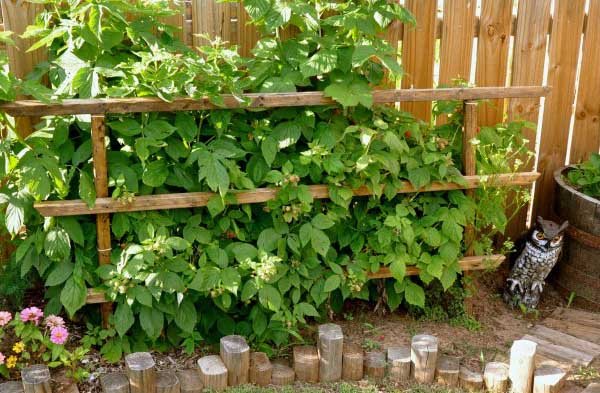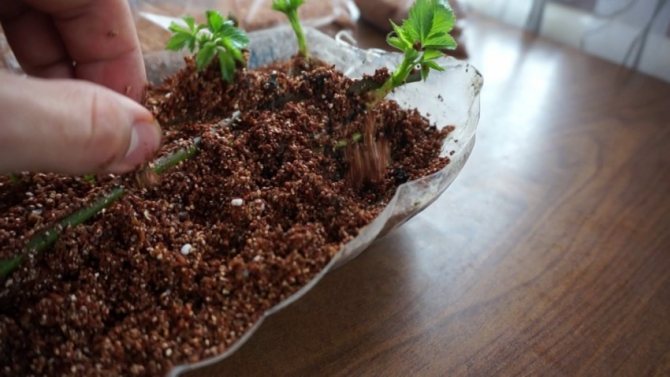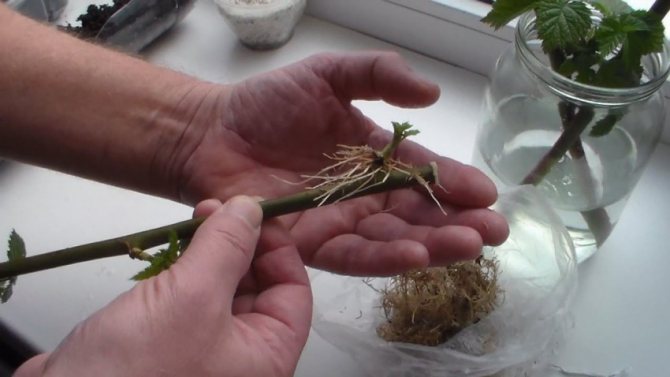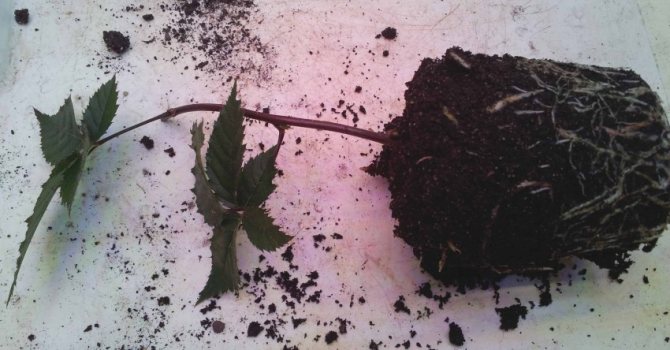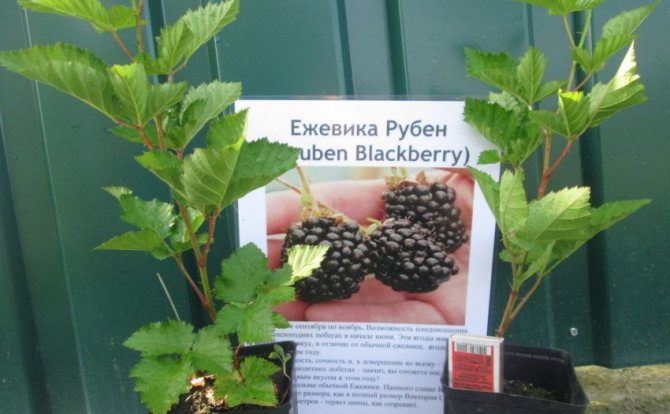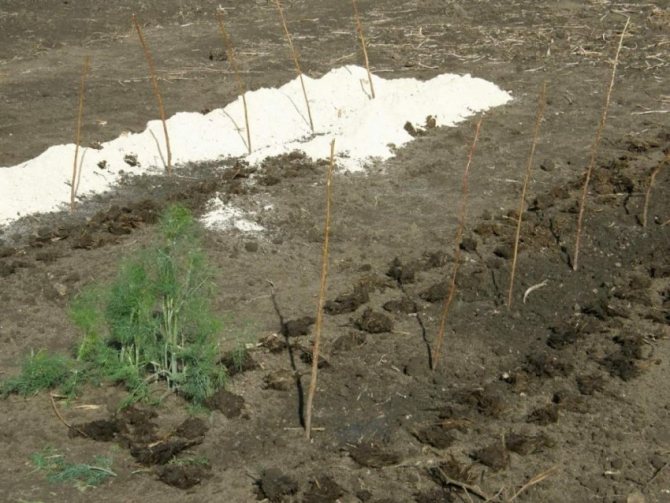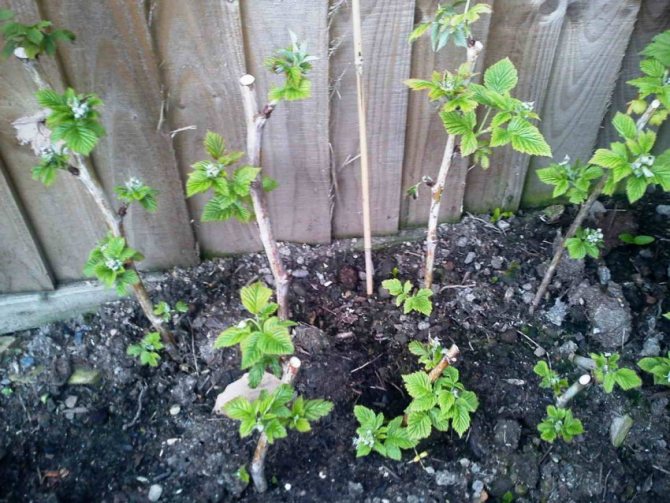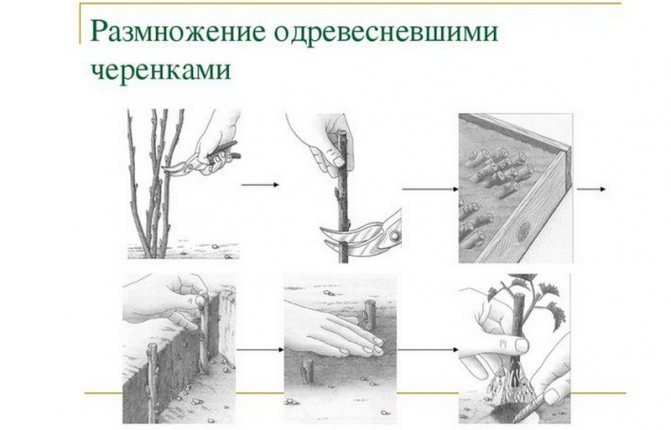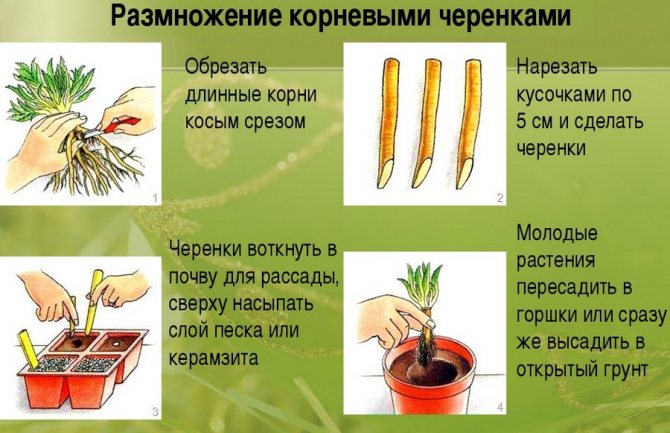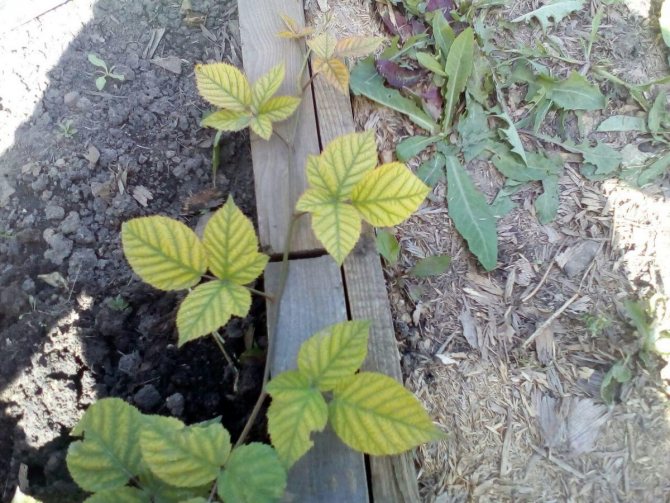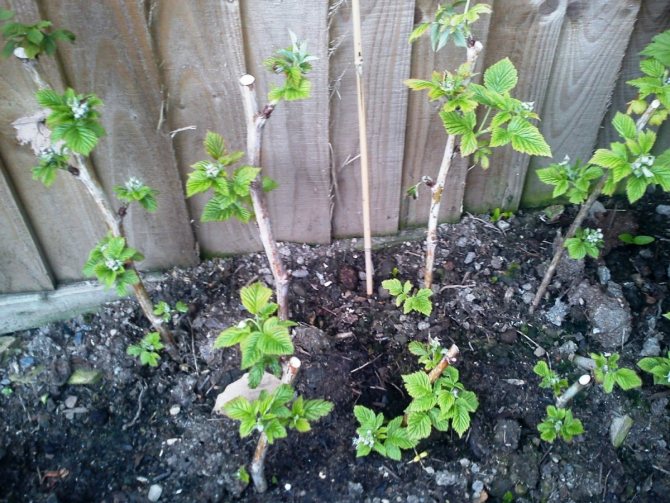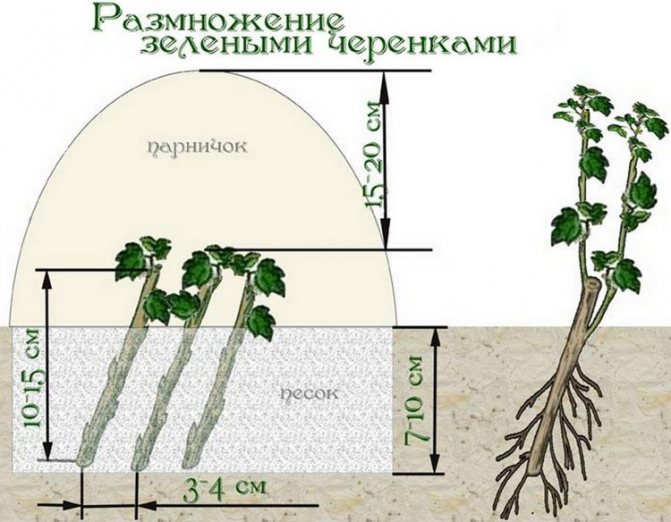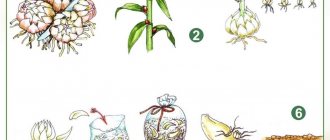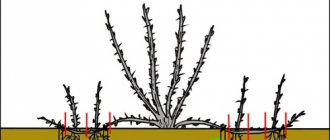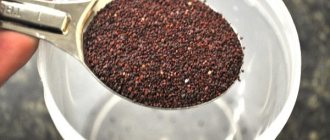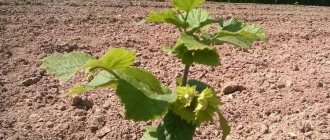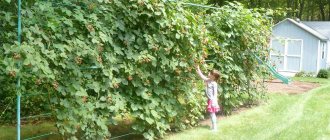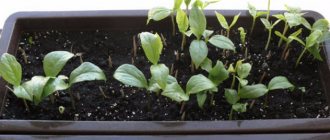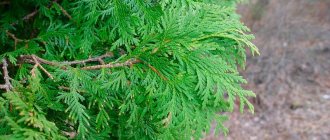To obtain blackberry seedlings, it is not always necessary to visit a fruit nursery. If there is a favorite variety on your site, then there will be no problems with its reproduction. Species traits can be preserved, and almost any amount of planting material can be obtained, it all depends on the chosen breeding method.
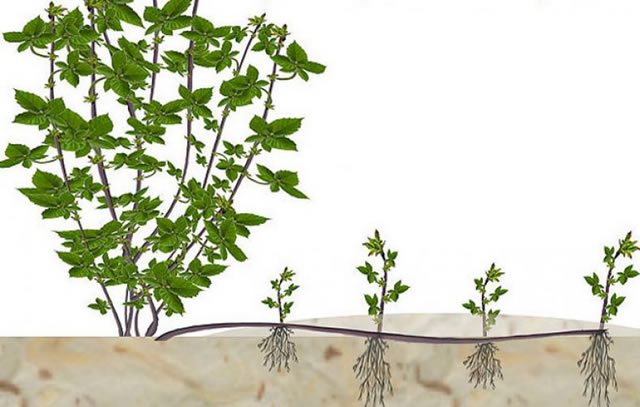
How to choose a seat
Blackberries are a sun-loving culture. Therefore, it should be planted in a well-lit area. In this case, it is advisable to choose a place in such a way that the bushes are as protected as possible from strong winds. This plant will also feel good in the shade. However, her berries in this case will not be so sweet and large.
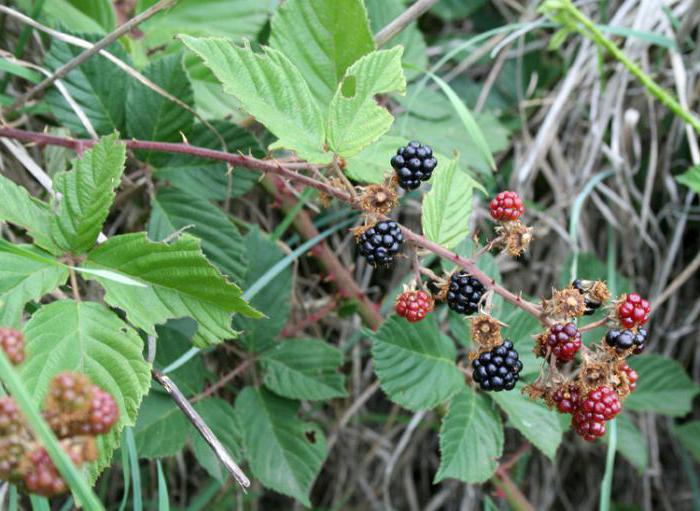

Blackberries are not particularly demanding in terms of soil composition. However, it grows best on humus-rich soil with a neutral reaction. Sour soil can be improved by adding dolomite flour or lime. Blackberries should not be placed on swampy or flooded areas.
Landing rules
A hole for a blackberry seedling should be dug large. The root system of the plant must fit completely in it. Its approximate width and depth is 50 cm. Before planting, you should prepare a soil mixture suitable for this culture. They make it from garden soil and compost. A very good solution would be to add 100 g of superphosphate and 35 g of some potassium fertilizer to the soil.
Part of the mixture is poured into the pit immediately. Then a seedling is lowered into it. Further, the roots are covered with soil so that the root collar of the plant protrudes about 1 cm above the ground. At the final stage, the ground around the seedling is compacted and thoroughly spilled with warm water. It is possible to plant blackberries according to the technology described above both in autumn and in spring.
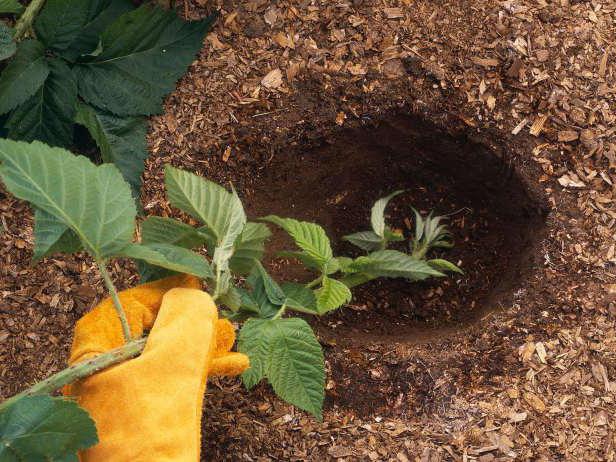

Care features
Growing blackberries on the site involves, first of all, performing such procedures as watering, feeding, loosening and removing weeds. The soil under this plant is moistened throughout the growing season. Watering is especially important during the period of shoot growth and berry ovary. The last time the soil under the bushes is moistened in October.
Once every three years, blackberries should be fertilized with compost (4-6 kg per bush). In the intervening years, nitrophosphate is used in the amount of 20-30 g per 1 m2.
Blackberries, planting and care (reproduction of this culture can be carried out in different ways) for which - procedures that require adherence to a special technology - a culture that requires periodic pruning. Its stems are shortened in the fall so that the length of the remaining part is 1.6-1.8 m.
Reproduction by layering
Thus, in order to obtain rich yields, plants must be well cared for. Reproduction of blackberries is also a rather complicated operation. Creeping varieties of this plant are most often bred with apical layers. The essence of the method consists in rooting blackberry shoots without separating from the parent bush. This is one of the most effective methods and most likely produces many new young plants. Blackberries are bred using this technology as follows:
- The soil around the bush is carefully loosened with a pitchfork to a depth of at least 30 cm.
- A little coarse garden sand is mixed into the soil.
- All lumps lying on the surface are crushed.
- Leaves are cut off from the shoots at a distance of 30 cm from the top.
- At the level of the node (approximately in the middle of the shoot), an oblique "tongue" cut is made about 5 cm long.
- The wound is sprinkled with some kind of hormonal drug.
- A saucer-shaped fossa with a depth of 20-30 cm is dug in the ground.
- The "tongue" is folded back and pressed with a pebble or splinter.
- The shoot is immersed in a knot in a hole, secured with a piece of wire and sprinkled with earth.
- The upper part of the shoot is tied to some kind of support in an upright position.
- The soil over the sprinkled part is slightly compacted.
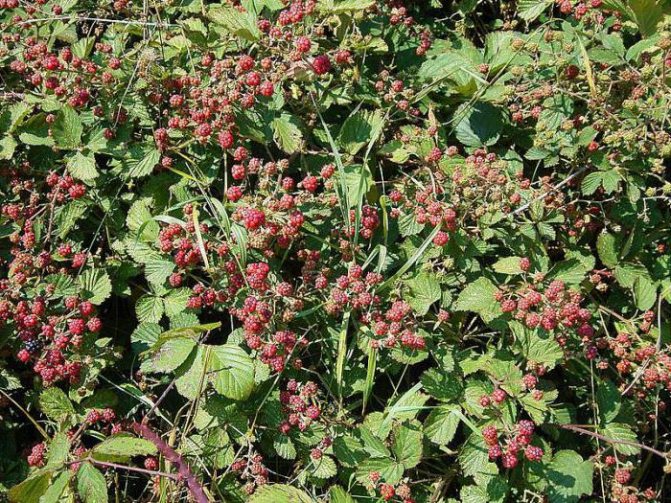

This is how the landing is done. Reproduction of blackberries in this way will be successful, but only if the soil around the bush is periodically moistened. Watering should be carried out until the top takes root. The process of formation of the root system on the shoot usually lasts about a year. In some varieties, it stretches up to one and a half years. In order to make sure that the roots have developed well, the shoot should be lifted slightly with a pitchfork.
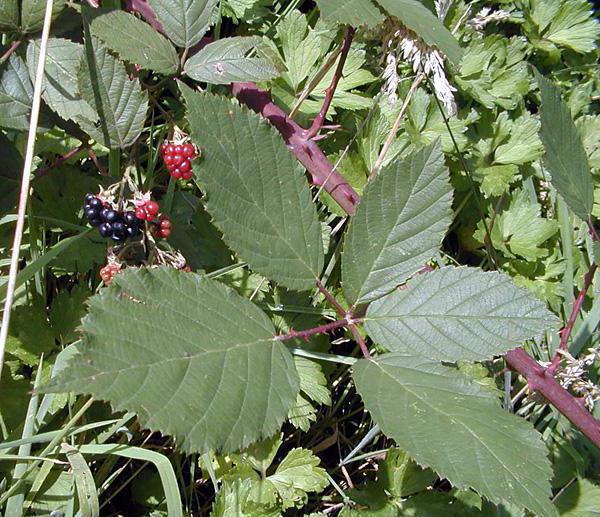

Cut off the parent branch only in the fall or spring. The formed bush itself is immediately transplanted to a new place.
Blackberry propagation by layering is one of the easiest ways. However, you can try to breed the creeping variety in a slightly different way.
Sleeping kidney
For this method, cuttings no more than 15 cm in length with three dormant buds are harvested from one-year-old shoots in the fall. Such blanks are stored in a cellar or refrigerator.
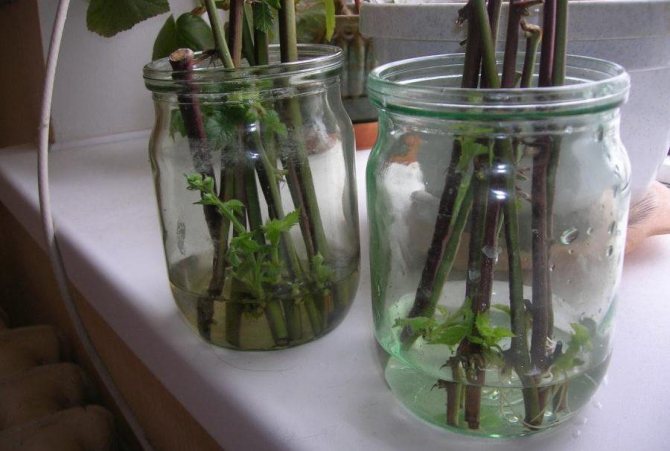

Germination of dormant buds in the stem
Then the following happens:
- In March, the cuttings should be removed, turned upside down, placed in a transparent vessel.
- Pour water so that it covers only one kidney, without waking the rest.
- Water must be added as it evaporates and the shoots must be kept on the windowsill.
- The awakened bud will sprout with a shoot with roots. It should be separated and planted in a container with a loose, airy substrate.
- Next, the next kidney is placed in the water, and everything is repeated again.
This method is most suitable for climbing blackberries, cuttings of upright varieties do not root well in this way.
Propagation by cuttings
This is also a fairly popular method, often used by amateur gardeners. Blackberry propagation by cuttings is an operation that includes the following steps:
- In early June, green cuttings are cut from the shoots. Each should have one kidney.
- A soil mixture made from peat and sand in a 1: 1 ratio is poured into large plastic cups.
- Cuttings are planted in cups and covered with foil on top.
In order for the planting material to take root properly, a very high humidity (90-95%) must be maintained in the "greenhouse". After about a month, the cuttings can be planted in a permanent place.
Cuttings in greenhouses and on window sills
Like currants, blackberries are very easy to propagate with green cuttings, that is, parts of shoots. This is the most productive way because you get 1 seedling from one bud. Read the instructions carefully and you will succeed.
- In autumn, prepare cuttings from annual shoots. The handle should have at least 2, maximum 3 buds. It should not be longer than 15 centimeters. Cut the leaves. We are interested in the kidneys sleeping in the sinuses.
- Important! We turn the stalk downward with the right kidney and put it in a jar of water so that the water covers only the lower kidney. The other two kidneys are resting.
- We put the jar on the windowsill and regularly add water as it evaporates.
- After a while, a mini-blackberry bush with roots and young shoots will grow from a bud in the water. He is what interests us.
- We separate this young seedling together with part of the cutting itself and plant it in a glass with a light nutritious soil mixture for growing seedlings, water it lightly.
- Now you can put the next kidney in the water! The process is repeated.
- We grow young blackberry bushes on a windowsill or in a greenhouse until spring.
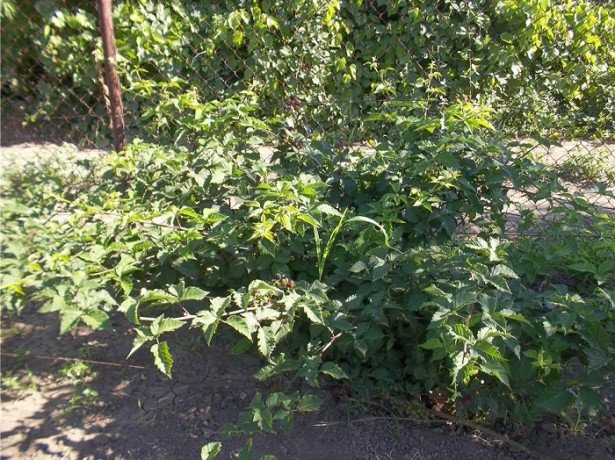

Like currants, blackberries are very easy to propagate with green cuttings, that is, parts of shoots
When it is sweeping outside the window, the frost is bursting, a small plantation of bright green blackberry bushes on your windowsill pleases the eye and inspires hope for the future harvest. Of course, you spent a fraction of your labor and time on it. But if you do it with pleasure, investing your soul, is it not the happiness of a gardener - even in winter to do what you love! And the reproduction of blackberries is now not a problem for you!
Propagation by root cuttings
This technology is used for the cultivation of creeping and bush blackberries of those varieties that give too few root suckers. Blackberry propagation by cuttings is an operation that can be carried out both in autumn and spring. In November or at the end of March, the mother bush is completely dug up and cut into several parts. You can also separate the roots from it at a distance of at least 60 cm from the stems. If the operation is carried out in the spring, the resulting planting material is immediately transferred to a permanent place. If the bush was dug up in the fall, the root cuttings are stored in the basement until spring (in wet sand).
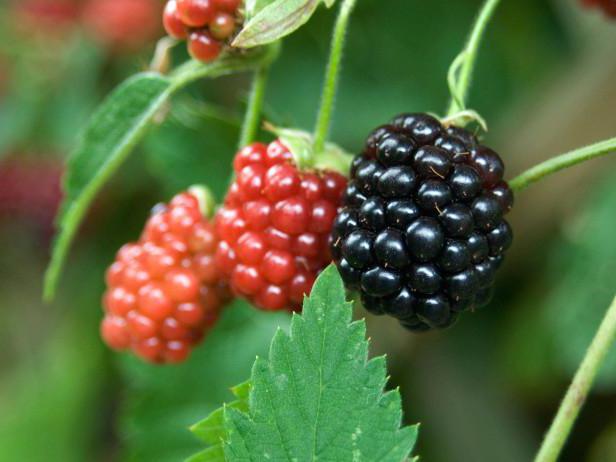

Seeds
Seed propagation of blackberries will require a lot of patience from the gardener. The first fruiting here is possible only after 4 years, and a full harvest can be harvested only after 5 years.
Important! The germination rate of blackberry seeds from stores is only 10%, while planting material from breeders or collected with their own hands already has a germination rate of up to 80%.
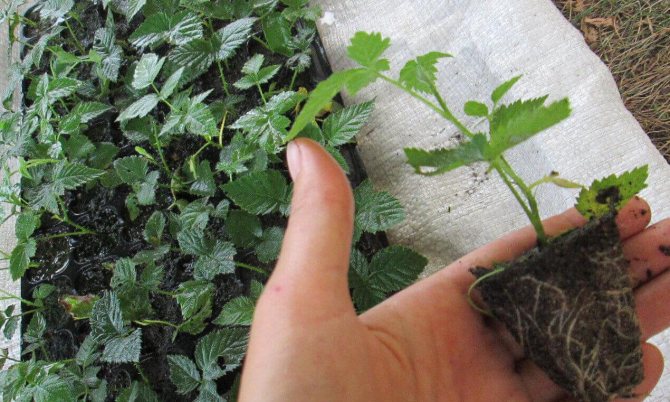

Seed method
To harvest a blackberry seed, you need overripe berries that have not been exposed to diseases. The gruel from the fruits is washed several times with water, while large viable seeds settle at the bottom of the dish, and the pacifiers and fibers remain floating on top.
Planting material free from husks and fibers is placed on a cloth or paper towel and slightly dried in a shady place, and then prepared for planting. Seeds are not sown immediately. They are kept in a refrigerator at a temperature of + 4 degrees for about three more months in a plastic container, covered with sand, which is moistened from time to time. You can store seeds in this way for no more than a year.
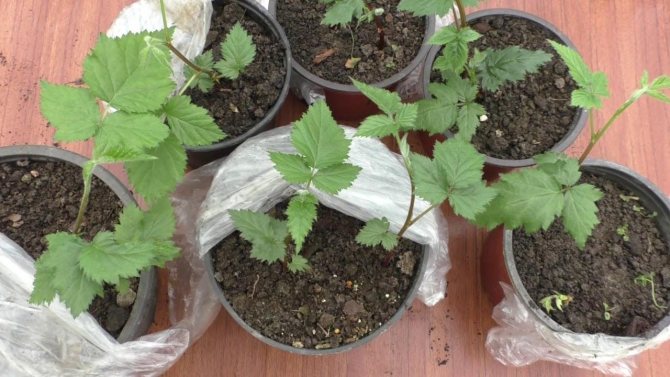

The best soil temperature for germination is from 25 to 28 ° C, therefore, seedlings are first grown in room conditions, which are subsequently transferred to open ground. In early March, you can sow seeds for seedlings and grow them under a phytolamp.
However, there is also an autumn method of sowing in open ground. When the last foliage falls from the trees, sowing is carried out. Seeds overwinter in their natural environment and germinate in spring. This method produces hardened and more viable plants and eliminates the need to grow seedlings.
Reproduction of blackberry bushy: features
Cultivars of this variety usually have either creeping stems or semi-erect stems. Therefore, most often they are bred with apical layers. You can propagate the studless blackberry in any other way. The only thing is that you cannot use root cuttings breeding technology for this variety. The fact is that when it is applied, new plants grow with thorns.
Propagation of blackberries with thornless apical layers can also be carried out using a slightly modified technology. This method is convenient because the plants can be immediately planted in a separate bed. The difference from the conventional technique is that the shoot tip is immediately detached from the mother plant. After that, it is placed in a small container with water, which you need to dig in on the prepared bed. Further, everything is done in the same way as in the usual way.That is, a hole or groove is dug next to it, into which the top of the cutting is placed.
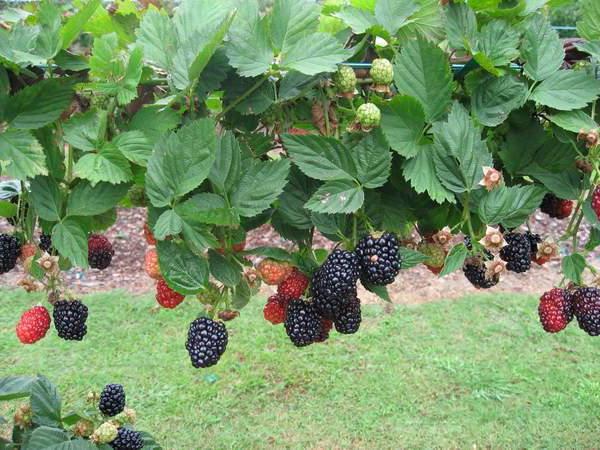

As you can see, blackberry propagation is a rather complicated procedure. In any case, it is quite different from the breeding methods of most other horticultural berry crops. Creeping and semi-creeping varieties are best planted with apical layers. For bush, propagation technology by root cuttings or offspring is more suitable. The main thing is to adhere to the chosen technique exactly.
When to propagate blackberries in spring, summer and fall
Blackberries are propagated at any time of the year - in spring, summer and autumn, except for winter. For each period, different ways of dividing the shrub are suitable:
- Spring - perfect timing for transplanting to a permanent place already rooted cuttings (root and stem) and young blackberry seedlings. Also at this time root suckers and cuttings are planted, multiply dividing bushes.
- In summer blackberries are propagated replacement shoots tops (apical layers), horizontal layers, more precisely, during this period they are buried in the ground, cut and rooted green cuttings,
With the summer reproduction of blackberries by dividing the bush, there is a danger that the bush will not be able to successfully take root because of the heat - increased air temperature. Therefore, if you decide to divide the bushes in the summer, although it is better to do this in spring or autumn, then be sure to mulch them and water them regularly.
- Autumn (August-October) usually harvest root suckers and cuttings for their further planting in the spring. Also cut lignified stem cuttings. Just like in summer drop the tops of the replacement shoots (apical layers) and horizontal layers, in order to separate the young bush from the mother plant in the spring and transplant it to a new place. At that time the bushes are propagated by dividing,sprouted green cuttings are rooted.
Specific approximate dates are indicated in the separate paragraphs dedicated to each breeding method.
